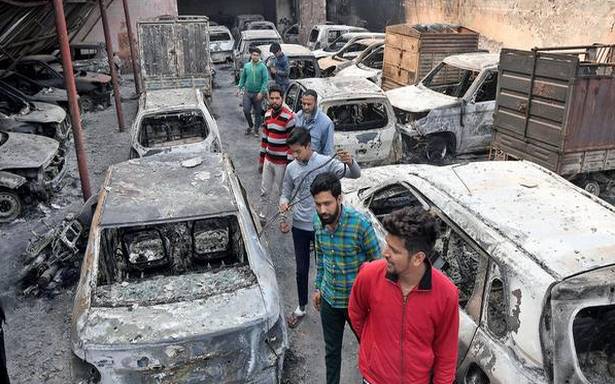As the fires ebbed, and roads to one of areas worst affected by the riots, Shiv Vihar Phase 7, opened up, 25-year-old Arshi picked her way out of the rubble of what was once her home in an area that is now a ghost town. When her family fled a few days ago, she says, their only thought was to save their lives as mobs tore down doors, set gas cylinders alight and destroyed their belongings.
My home is all right, says Arshi; but when she asked what she could salvage, she looks at her bare hands, and says, nothing at all. No clothes, no prized possessions, and no memories of the years her family has lived here.
As the district administration sets up relief centres and hands out claim forms for compensation, the family’s biggest worry, however, is that their crucial documents and all the papers in the house are strewn everywhere.
Aslam, a scrap dealer salvaged two bags worth of belongings from his home where he lived with his wife and three small children. He breaks down as he realises the mobs left nothing of the used refrigerators and air conditioner he had recently acquired with all his savings of ₹55,000.

Belongings gone: Families affected by the violence in northeast Delhi taking shelter in a private relief camp in Chaman Park on Saturday, while (right) residents of Shiv Vihar inspecting the damage to cars in a parking lot.
| Photo Credit:
Sandeep Saxena
“I really have nothing to get back on my feet with,” he adds, picking through the remains of computer parts and auto parts that lined his store, looking for his tools. His son Aftab, who accompanied his father back to Shiv Vihar, is visibly shaking with fear and wracked with sobs. A district official arrived to take stock of the losses, but soon lost interest and drove away, they say later.
According to resident welfare association officials, when the violence subsided and the fires burnt out, gangs of men began looting every building that was deserted. Many of them can still be seen, skulking in and out of the ho

